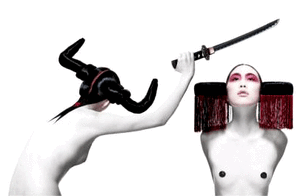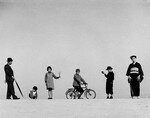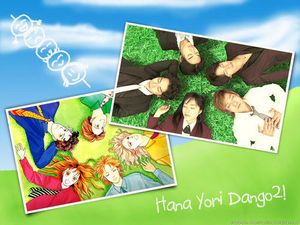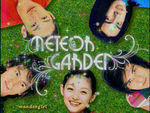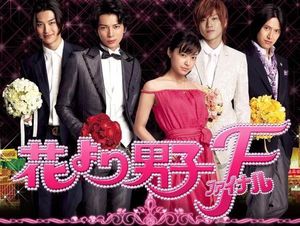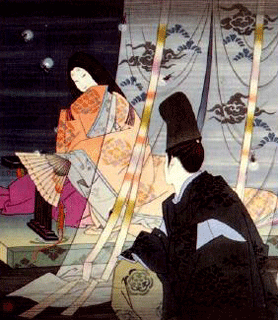フランスは漫画が大好き !
日本の後で、漫画を読むのが好きな国はフランスです。びっくりしないで !
French people read over 13 million manga every year (2006 survey). We are the first manga-readers in the world after their mother-country, Japan; France alone reads more manga than the USA as a whole.
In addition, French manga/anime/j-pop culture festivals are more popular, numerous and thrilling every year, appealling to people all over Europe, like "Japan Expo" (every July in Paris).
There are many reasons for the French public to love and support the spread of Japanese manga, despite of the estrangement of our nations and historic cultures.
First, the comic strips culture is very developped in France, as a result of a long tradition of written and painted  caricatures ; we share this culture with Belgium through the use of French language and various associations between French and Belgian authors of what we call "bande-dessinee franco-belge". The famous Festival of Bande Dessinee at Angouleme, every year, reveals our comittement in this art. Probably, our BD opened the way for the success of Japanese manga in France.
caricatures ; we share this culture with Belgium through the use of French language and various associations between French and Belgian authors of what we call "bande-dessinee franco-belge". The famous Festival of Bande Dessinee at Angouleme, every year, reveals our comittement in this art. Probably, our BD opened the way for the success of Japanese manga in France.
Then, it seems that the French have always been fascinated by the Japanese pictures since they discover it. Manga are just the continuation of our esthetic coup-de-foudre for the Japanese pictural arts, when we fell in love with Japanese paintings which inspired the movement of "Japonisme" around 1880 in France.
Finally, for the current generation of young adults like me, the esthetic of mange is deeply nostalgic because our childhood has been striken by Japanese anime which were broadcasted on TV when we were kids. While our parents, and the media in general, warmly criticized the unusual graphic style (thougher than round, sweet pictures made in Disney studios) and the violence of a few anime (not originally devised for kids in Japan...), my generation discovered with new eyes a whole little world, definitely exotic despite of the poor French version, where students wore uniforms, were driven by their passion, ate rice with shopsticks, lived in funny little town full of stairs and hot springs and always, always wore slippers at home. Growing up, we learnt that the little world of anime was a representation of a true and far-away country called Japan, and we naturally wanted to learn more about it.
This is how the kids born in the 70's and the 80's became the first fans of Japanese manga in the world. My former classmates' older brothers and sisters created the French manga boom and transmited their passion to their own kids.
As a result, the general public's raise of awareness about manga  began in the 1990's, with the publication of Akira (K. Otomo) by Glenat Editions. The same company then published the original manga of the anime that the French watched on TV when they were children, such as City Hunter, Dragon Ball, Ranma 1/2... And the French public could finally discover the true names of the protagonists, which had been turned into American names in the French versions of anime (for instance, City Hunter's Ryu is well-known as Nicky Larson in France, which is now considered as deeply ridiculous). Finally other Edition groups such as Dargaud (Kana collection) or Casterman developped their offer of manga, focusing on high-quality authors as J. Taniguchi. In 1995, two specialized companies were born to distribute manga only : Samourai Editions and Tonkam, which quickly became our first manga provider, and which had the good idea to keep the Japanese way of reading. Actually, the conversion into European way of reading was very expensive and disturbing for the readers, because some pages were very difficult to change (heart always has to be in the left side for example).
began in the 1990's, with the publication of Akira (K. Otomo) by Glenat Editions. The same company then published the original manga of the anime that the French watched on TV when they were children, such as City Hunter, Dragon Ball, Ranma 1/2... And the French public could finally discover the true names of the protagonists, which had been turned into American names in the French versions of anime (for instance, City Hunter's Ryu is well-known as Nicky Larson in France, which is now considered as deeply ridiculous). Finally other Edition groups such as Dargaud (Kana collection) or Casterman developped their offer of manga, focusing on high-quality authors as J. Taniguchi. In 1995, two specialized companies were born to distribute manga only : Samourai Editions and Tonkam, which quickly became our first manga provider, and which had the good idea to keep the Japanese way of reading. Actually, the conversion into European way of reading was very expensive and disturbing for the readers, because some pages were very difficult to change (heart always has to be in the left side for example).
In 1996, the great magazine Animeland appeared in France, proposing news about the publications in France and in Japan, cultural articles about j-pop cultures, information about manga, anime, video games... Later, Coyote mag offered original manga-style pages including the very famous Sentai School by Cardona & Torta, a comic parody of the Japanese students-heroes stories, with many hidden (or not) references to the manga culture. The French manga hit in 2007 was Naruto, with 220 000 manga sold.
in Japan, cultural articles about j-pop cultures, information about manga, anime, video games... Later, Coyote mag offered original manga-style pages including the very famous Sentai School by Cardona & Torta, a comic parody of the Japanese students-heroes stories, with many hidden (or not) references to the manga culture. The French manga hit in 2007 was Naruto, with 220 000 manga sold.
 In opposite with Japan, we don't have any prepublication system so we buy manga directly. The main inconvenient is that fans have to wait the next book a long time. Nevertheless, it also let us free to judge a manga for the content itself and not for the category it is supposed to target ; so, in France, many boys read shojo as well as shonen style, and many girls are attracted by shonen manga too.
In opposite with Japan, we don't have any prepublication system so we buy manga directly. The main inconvenient is that fans have to wait the next book a long time. Nevertheless, it also let us free to judge a manga for the content itself and not for the category it is supposed to target ; so, in France, many boys read shojo as well as shonen style, and many girls are attracted by shonen manga too.
Though, you should know that the same manga costs 3,50€ in Japan, and at least 6 or 7€ in France... so our interest could increase again with better politics of distribution ! ;)
As you can see, manga is going to be part of the French culture too. Our main problem is to know if it is better to say "le manga" ou "la manga"... boy or girl ? Please, Japanese people, help us to find the gender of manga !
 Jusqu'au 5 avril, dans le
Marais, la photographe Sabine Pigalle expose ses "Geishas" inspirées
par Eros et Thanatos, avec une bonne dose d'ironie. Les demoiselles
sont nues jusqu'à la taille, blanches comme neige, fantômatiques. Elles
rappellent les statues mortuaires médiévales, tout en faisant référence
à l'industrie de la beauté et à l'instrumentalisation des stereotypes
raciaux.
Jusqu'au 5 avril, dans le
Marais, la photographe Sabine Pigalle expose ses "Geishas" inspirées
par Eros et Thanatos, avec une bonne dose d'ironie. Les demoiselles
sont nues jusqu'à la taille, blanches comme neige, fantômatiques. Elles
rappellent les statues mortuaires médiévales, tout en faisant référence
à l'industrie de la beauté et à l'instrumentalisation des stereotypes
raciaux.  Sabine Pigalle, Geishas
Sabine Pigalle, Geishas

/https%3A%2F%2Fstorage.canalblog.com%2F35%2F77%2F571165%2F111404215_o.jpg)
/https%3A%2F%2Fstorage.canalblog.com%2F86%2F39%2F571165%2F111404156_o.jpg)
/https%3A%2F%2Fstorage.canalblog.com%2F22%2F21%2F571165%2F108003869_o.jpg)
/https%3A%2F%2Fstorage.canalblog.com%2F34%2F83%2F571165%2F108003851_o.jpg)
/https%3A%2F%2Fstorage.canalblog.com%2F13%2F55%2F571165%2F108003836_o.jpg)


